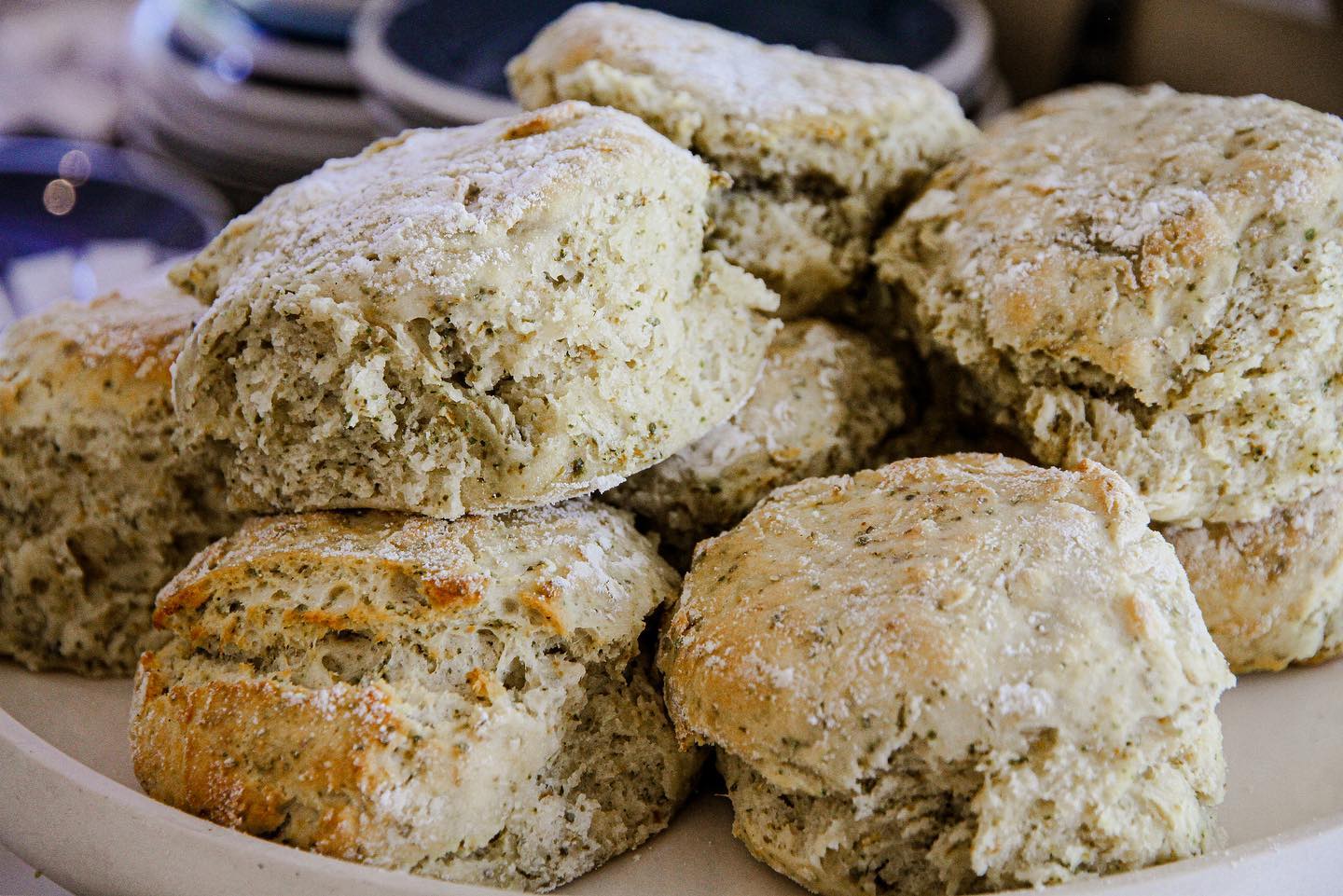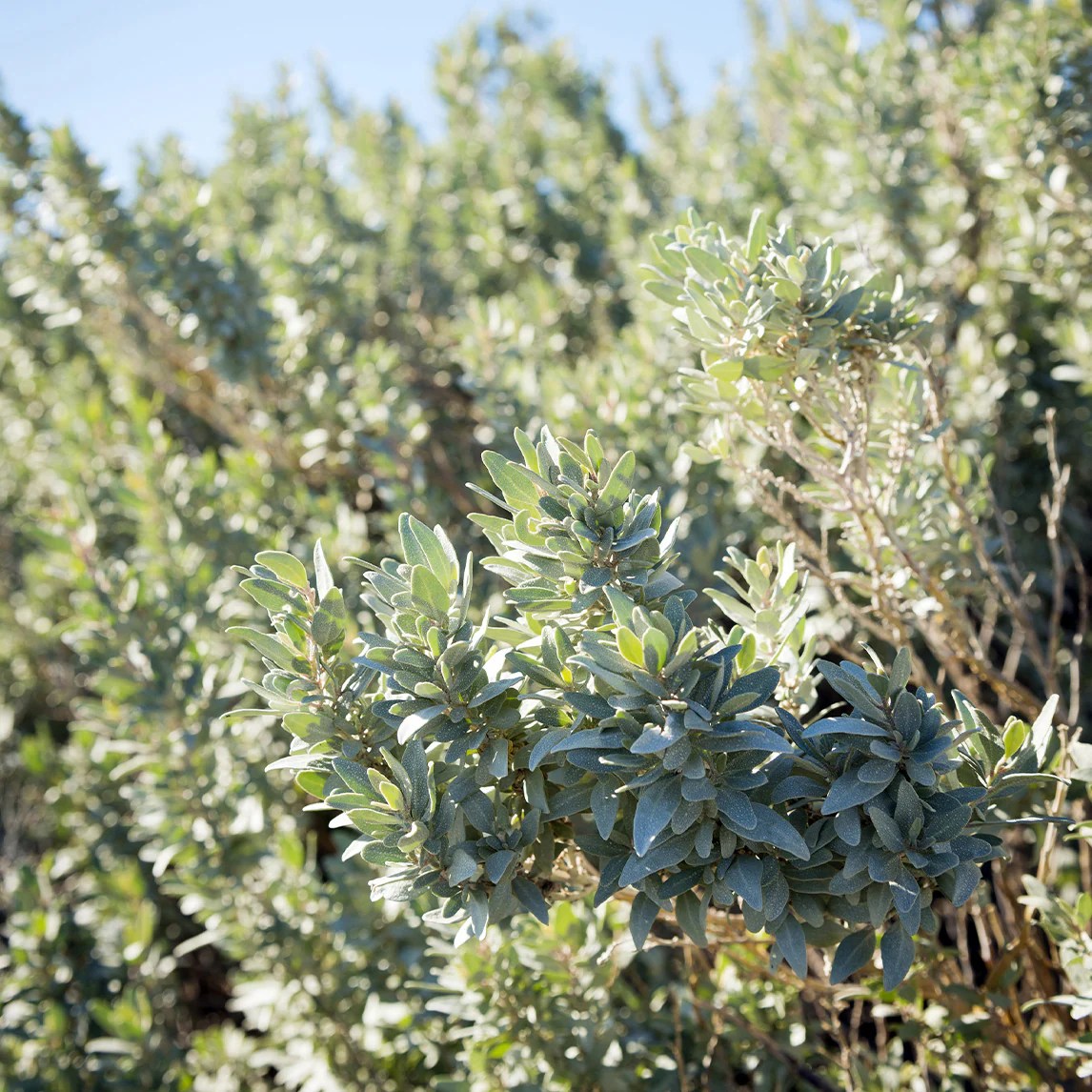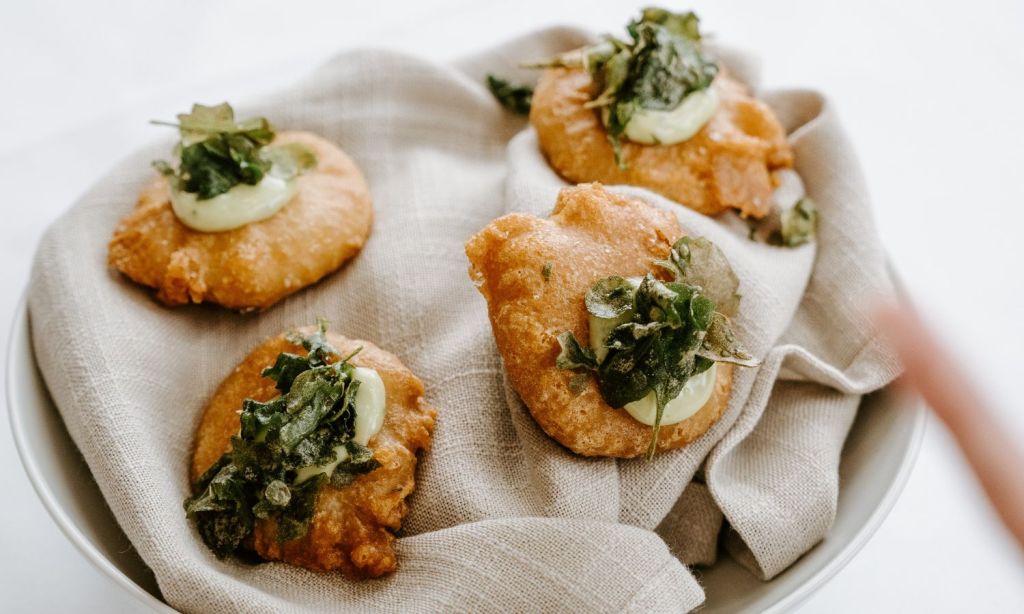Will Indigenous Australian food ever be mainstream? This was the headline of a piece Melissa Leong wrote for SBS Food in 2018. She wrote that the past few decades had seen merely an ongoing flirtation with native Australian produce with few serious attempts at truly integrating them with European technique.
In 2024, I’m seeing that changing with one Indigenous ingredient leading the way: saltbush. Also known as ‘old man saltbush’ and ‘creeping saltbush’, it’s a multi-branched plant growing in a bush-like habitat. It’s native to most arid parts of Australia and grows year-round.
It’s in a fried corn bechamel at Bar Margaux in Melbourne. St Kilda Stokehouse has a saltbush and vinegar potato cake. Hearth, a café and cake shop in Sydney’s Stanmore, serves saltbush scones. Tipo00 in Sydney’s Balmain has saltbush on a pizza. And Oppen, a café and wine bar in Melbourne’s Windsor, once served chilli scramble with saltbush.
“I use saltbush whenever I want to add an earthy note to a baked item,” says Christopher Thé, baker and owner at Hearthe. “It adds depth of flavour and complexity. It also imparts a lovely green hue. For our saltbush scones, I air dry and grind saltbush leaves then add them to the scone mix.”

Thé also tops ham and cheese scrolls with saltbush. He says he prefers saltbush instead of salt because of its slightly bitter flavour and positive environmental impact. Saltbush helps regenerate overgrazed soils that have become too saline to grow anything else. Buying it also benefits Indigenous farming communities.
Zume Pham, head chef and co-owner of Oppen, says he added saltbush to chilli scramble because it gave the dish an Australian touch and grounded it in local tradition. Pham says saltbush was easy to source.
“Since we’re a Scandinavian-inspired café, we also follow their tradition of foraging,” he says. “We gathered a small bunch of saltbush ourselves from the beach. Just a little is enough to make a big impact on the dish, adding that essential touch while staying true to the foraging practices of Scandinavian culture.”
At Tipo00, saltbush is one of a few native ingredients used in a pizza they call ‘native’. Lemon myrtle and spiced bush tomato relish are also included. The restaurant’s owner and chef Gianluigi di Sarno created the pizza to celebrate Australia.
“I believe that Australians will soon be intrigued by these exceptional products from their land,” he says. “It is important to know their traditions and origins.”
Traditionally, Indigenous Australians collected the seeds and leaves of saltbush. They then ground them and used them to add flavour to foods. The leaves were sometimes eaten fresh or added to meat as it cooked.
Not all saltbush is created equal, Jason Staudt, executive chef of Stokehouse, points out. Some varieties can be quite bitter. He’s more of a fan of the broad-leaved variety than the coastal fine-leaf variety.

“I felt it sounded catchy ‘saltbush and vinegar potato cake’, something easily marketable,” he says. “It was born during lockdown in our takeaway fish shop and hasn’t come off the menu since.”
Staudt says he’s seeing saltbush at major fruit and vegetable markets now. It arrives at Stokehouse in big bunches and the team picks it into pieces before frying it at 140C. It’s done when it’s crispy but still holding its natural colour. Then the saltbush is tossed in fine sea salt and vinegar powder which gives it an acidic punch that cuts through the fat of the potatoes.
“People are starting to care about food sourcing more,” Staudt says. “A lot of the diet in Australia is heavily influenced by the UK, Asia and Europe in the past. Now that Australia is becoming a food-centric culture, people are more confident in using different local ingredients regularly. Finger limes [another native ingredient] seem to be everywhere.”
Stokehouse works with Matthew Koop at native food supplier Ni Ni Well. Koop has been growing varieties of wattle. The plant is healthy — high in fibre and low in starch — and, according to Staudt, delicious. Stokehouse also uses muntries, plants native to Victoria and South Australia, pickled or made into mustard.
Every dish at Hearthe uses at least one native Australian ingredient, including Geraldton wax, lilly pilly or paperbark. Thé says many interesting flavours come from the land around us yet are unknown to diners. He sees that changing in the next few years.
“I would love to see our food preferences shift towards eating in a way more sympathetic to the environment,” he says. “Most native ingredients grow wild, are low impact and require few resources.
“As our palate as a nation shifts toward the food of this land and more suppliers make native ingredients more accessible, I believe they’ll become more readily available in supermarkets and online.”
Related: Lennox Hastie’s Guide to One of the World’s Most Awarded Gastronomical Cities
Related: Australia’s Saying Oui Oui to French Restaurants Again
Read more stories from The Latch and subscribe to our email newsletter.







